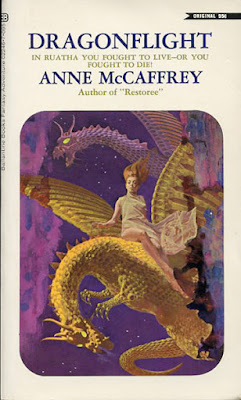Wolf Cub
by Grzegorz Rosinski (art) and Jean Van Hamme (writer)
Cinebook, 1990 / 2010
'Thorgal' is a very popular Franco-Belgian comic book (album de bande dessinee) that has, unfortunately, never gotten the exposure it deserves in the U.S.
Thorgal started as a serial in 1977 in Tintin magazine and graduated to its own album in 1980. As of 2019, 37 issues have been published (along with more than 10 spin-offs), and 27 have been translated into English.
In the U.S., the Thorgal comics are published by the British firm Cinebook, who are (at present) probably best-known for issuing the series of English-language compilations of the Valerian comic books.
According to its website, Cinebook has published 22 Thorgal paperbacks since 2009, and while only a few of these are available for purchase in the U.S., all 22 are available from amazon in its Kindle format. ('Big Planet' comics, a comic book shop located in the greater Washington DC area, apparently is the sole U.S. brick-and-mortar retailer for Cinebook publications).
Several years ago I was fortunate enough to get a set of five of the Cinebook Thorgal graphic novels from eBay for a reasonable price, hence my review of 'Wolf Cub'.
The Thorgal comics are set in the Middle Ages, mainly in Northern Europe (some stories take place in more exotic locales). Adopted as as infant by a Viking clan, and reared as one of their own, Thorgal is a less brawny, more intelligent version of Conan the Barbarian. His adventures often involve supernatural forces, of both good and evil origin.
Cinebook's format for the English translations has its problems. The most obvious is the size; most albums de bande dessinees are 12 x 9 inches in dimension, but inexplicably, Cinebook made its Thorgal lineup only 10 x 7 1/4 inches. It also put a $11.95 price tag on the books. This combination of small size and steep pricing have severely hampered the marketing of the Thorgal series in the U.S.
So we come to 'Wolf Cub' (48 pp), first published in France in November 1990 as Louve ('She-wolf'), with the Cinebook version issued in 2010.
As 'Wolf Cub' opens, Thorgal is travelling for home aboard a Viking ship, accompanied by his pregnant wife Aaricia and son Jolan. Their ship is accosted by a psychotic Viking chieftain named Wor The Magnificent, who wants Thorgal to join him on a raid of a Saxon village. Thorgal is repulsed by Wor's lust for sluaghter and refuses to a join the raid.
This refusal sets in motion a sequence of events that will see Thorgal's family endangered by the Wor's brutish followers. But Thorgal will have an ally.......a mysterious hunchback with supernatural powers, and a deep hatred for Wor...........
One thing that is immediately apparent in any Thorgal comic book is the high quality of the artwork by Polish artist Rosinski. He is adept at depicting human faces / expressions, and in rendering medieval landscapes, villages, clothing, buildings, ships, and other objects with a high degree of accuracy and period authenticity.
Writer Van Hamme also deserves kudos for producing stories that are easy to follow while at the same time providing twists and turns that prevent them from becoming too formulaic. In an era in which so many U.S. comics are badly overwritten and over-plotted, it's refreshing to sit down with a comic writer who can craft a narrative that sits comfortably within the 48 page format.
Summing up, 'Wolf Cub', like the other four Thorgal comics I have read, is a high-quality entry in the wider genre of sword-and-sorcery. Whether you come across the printed versions, or elect to acquire the digital versions, this is a series well worth looking out for.




















































































